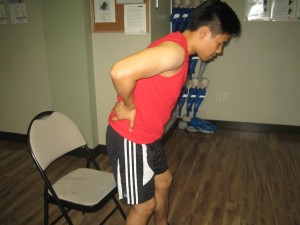A hip dislocation typically occurs once the head of the femur is forced out of its socket in the hip bone. This injury occurs when a substantial force is placed on the hip such as during vehicular accidents and falling from a height. Other injuries such as broken bones often occur with dislocation. Remember that hip dislocation is a medical emergency that entails immediate treatment. If you want to learn the proper steps to perform to ease the pain, click here.
What is hip dislocation?
If an individual has hip dislocation, the head of the femur is pushed either backward out of the socket or in a forward manner.
Most cases of hip dislocation involve the pushing of the thighbone out of the socket in a backwards direction. This is called a posterior dislocation that leaves the lower leg in a fixed position with the knee and foot rotating toward the middle of the body. When the thighbone slips out of the socket in a forward manner, the hip is bent slightly while the leg rotates out and away from the middle of the body.
What are the symptoms?

Hip dislocation can cause a lot of pain. The individual could not move the leg and if nerve damage is present, there is lack of sensation in the foot or ankle area.
Possible causes
Vehicular accidents are the common cause of traumatic hip dislocations. Remember that dislocation often occurs once the knee strikes the dashboard during collision. The force will drive the thighbone backwards which thrusts the head of the femur out of the socket. Using a seatbelt can drastically reduce the risk for hip dislocation during a collision.
Falling from a height can produce enough force to cause hip dislocation. When it comes to hip dislocations, there are often other linked injuries such as fractures on the legs, back and pelvis as well as head injuries. The common fracture occurs once the head of the femur strikes and breaks off the rear part of the hip socket during the injury.
Diagnosing hip dislocation
A hip dislocation is considered as a medical emergency. Do not attempt to move the individual but try to keep him/her warm with a blanket. If hip dislocation is the only injury, the doctor will diagnose it by checking the position of the leg. Since hip dislocation often occurs with other injuries, the doctor will perform a thorough physical examination.
Treatment
In case there are no other injuries, the doctor will administer an anesthetic or sedative in order to manipulate the bones back into proper position which is called as reduction. In some circumstances, the procedure must be performed in the operating room with anesthesia.
Recovery
It usually takes 2-3 months for the hip to fully heal after a dislocation. The rehabilitation period can take longer if there are other fractures. In most cases, the doctor will recommend limiting hip movement for several weeks to protect the hip from dislocating again.
